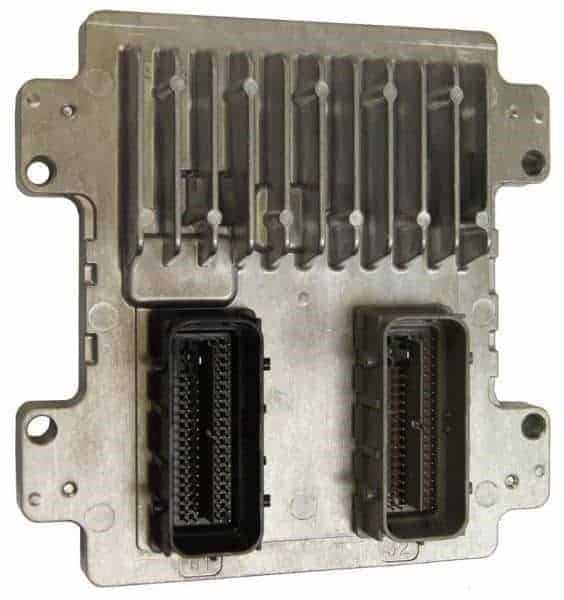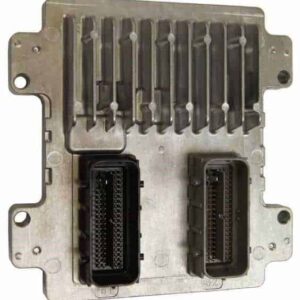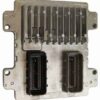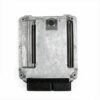Restore Your Pontiac G6’s Performance and Reliability
Is your 2008-2010 Pontiac G6 suffering from frustrating and unpredictable issues like stalling, a persistent check engine light, or a no-start condition? You’re not alone. The Powertrain Control Module (PCM) is the central computer of your vehicle, managing everything from fuel delivery and spark timing to transmission shifting. When it begins to fail, it can cause a cascade of problems that are often difficult to diagnose. This isn’t just an inconvenience; it’s a matter of reliability and safety. Stop throwing money at parts that don’t fix the problem and get to the root of the issue with a dependable, pre-programmed replacement PCM.
This is a direct-fit replacement Electronic Control Module (ECM), also known as a PCM, for your vehicle. It is compatible with multiple service numbers, including 12597125, 12612397, 12594750, 12629019, 12635902, and 12611549. The most critical service we provide is programming: we flash the module with the latest GM-certified software updates using the VIN you provide. This ensures that when the part arrives, it’s ready for a straightforward installation, restoring your car’s original performance and efficiency without a costly trip to the dealer for programming.
From the Diagnostic Bay: The Case of the Confusing G6
A customer brought in a 2009 G6 that had been to two other shops. The car would randomly stall at red lights and sometimes refuse to start for hours. The check engine light was on, but the codes were all over the place—random misfires, O2 sensor faults, and even a transmission communication error. The other shops had replaced plugs, coils, and a sensor, but the problem persisted. In my experience, when you see a collection of unrelated electronic faults, the central communication hub—the PCM—is often the culprit. After confirming the power and grounds to the module were solid, we connected our diagnostic tool and saw intermittent data dropouts. We installed one of our pre-programmed modules, performed the security relearn, and the car ran perfectly. The customer called a week later, thrilled that his car was finally reliable again. This is a classic scenario where a failing 2008-2010 G6 PCM was the true source of the problem.
Is Your Pontiac G6 Showing These Signs?
A failing PCM can manifest in numerous ways. If you’re experiencing any of the following, your engine computer is a likely suspect:
- ✔ Unexplained Check Engine Light that won’t go away.
- ✔ Stalling for no apparent reason, either while driving or at idle.
- ✔ No-start or hard-starting conditions where the engine cranks but won’t fire up.
- ✔ A noticeable drop in fuel economy.
- ✔ Harsh or erratic automatic transmission shifting.
- ✔ Communication error codes, such as U0100 (Lost Communication with ECM/PCM).
- ✔ Internal module failure codes, including the dreaded P0601, P0602, or P0606.
- ✔ Failure to pass an emissions or smog test.
A DIY-Friendly Guide to Your PCM Replacement
Installing your new 2008-2010 G6 PCM is a manageable job for a confident DIYer. While the exact location can vary slightly, it’s typically found in the engine bay. Following these steps will help ensure a smooth process.
- Safety First: Always disconnect the negative terminal from your vehicle’s battery and secure it away from the post to prevent any accidental reconnection.
- Locate the PCM: On most Pontiac G6 models, the PCM is located in the left-hand (driver’s side) front of the engine compartment, often near the fuse box or air filter housing.
- Disconnect the Connectors: Carefully release the locking tabs on the electrical wiring harnesses connected to the old module. These connectors have levers or clips that need to be disengaged before they can be unplugged. Never force them.
- Remove the Old Module: Unbolt the old PCM from its mounting bracket. Keep the hardware, as you may need to reuse it.
- Install the New Module: Mount your new, pre-programmed PCM onto the bracket and secure it. Reconnect the wiring harnesses, ensuring they click securely into place.
- Reconnect the Battery: Reattach the negative battery terminal.
- Perform Security Relearn (CRITICAL): Your vehicle’s anti-theft system (Passlock/VATS) needs to sync with the new PCM. This is a simple procedure: Turn the key to the ‘ON’ position (don’t start the engine) for 10-15 minutes, or until the security light on the dash stops flashing and turns off. Turn the key off for 10 seconds. Repeat this cycle two more times (for a total of three 10-minute cycles). The vehicle should then start and run normally.
Verified Fitment Across Multiple GM Models
While this is a perfect solution for the 2008-2010 G6 PCM, this module’s versatility extends to a wide range of General Motors vehicles. Please verify your model and options below:
- Pontiac G6: 2008-2009 (2.4L), 2010
- Pontiac G5: 2007-2010
- Pontiac Solstice: 2008-2010 (2.4L)
- Chevrolet Cobalt: 2007-2010 (2.2L, 2.4L)
- Chevrolet HHR: 2007-2011 (2.2L, 2.4L)
- Chevrolet Malibu: 2007 (2.2L), 2008 (Classic & New Style, 2.2L/2.4L), 2009-2012 (2.4L, 3.5L)
- Chevrolet Impala: 2010-2011
- Chevrolet Silverado 1500: 2007-2009 (4.3L)
- Chevrolet Express 1500 Van: 2008-2009 (4.3L)
- GMC Sierra 1500: 2007-2009 (4.3L)
- GMC Savana 1500 Van: 2008-2009 (4.3L)
- Saturn Aura: 2008-2009 (2.4L, w/o hybrid)
- Saturn Vue: 2008-2010 (2.4L)
- Saturn Sky: 2008-2010 (2.4L)
- Buick Lucerne: 2009-2011 (3.9L)
Frequently Asked Questions
Frequently Asked Questions
How does the VIN programming work?
After you complete your purchase, you will need to provide us with your vehicle’s 17-digit VIN. Our technicians use this number to load the correct, latest GM-approved software and calibrations for your specific vehicle, ensuring perfect compatibility.
Do I need to do anything else after installation?
Yes. After installing the module, you must perform the vehicle’s security relearn procedure as outlined in our installation guide. This is a simple process that syncs the new PCM to your car’s anti-theft system and does not require any special tools.
Is this part difficult to install myself?
For most individuals with basic mechanical skills, this is a straightforward replacement. It typically involves disconnecting the battery, unplugging a few connectors, and unbolting the module. The most important part is performing the security relearn procedure correctly afterward.
Will this fix my check engine light?
If the check engine light is caused by an internal failure of the PCM or a fault the PCM is responsible for, then yes, this will resolve the issue. It’s crucial to ensure your vehicle’s issues are properly diagnosed, as this module will not fix problems with external sensors or wiring.
How do I know if this part number is correct for my car?
This module replaces a wide range of original service numbers. As long as your vehicle is on our compatibility list and you provide your VIN for programming, we guarantee it will be the correct, functional part for your car.



